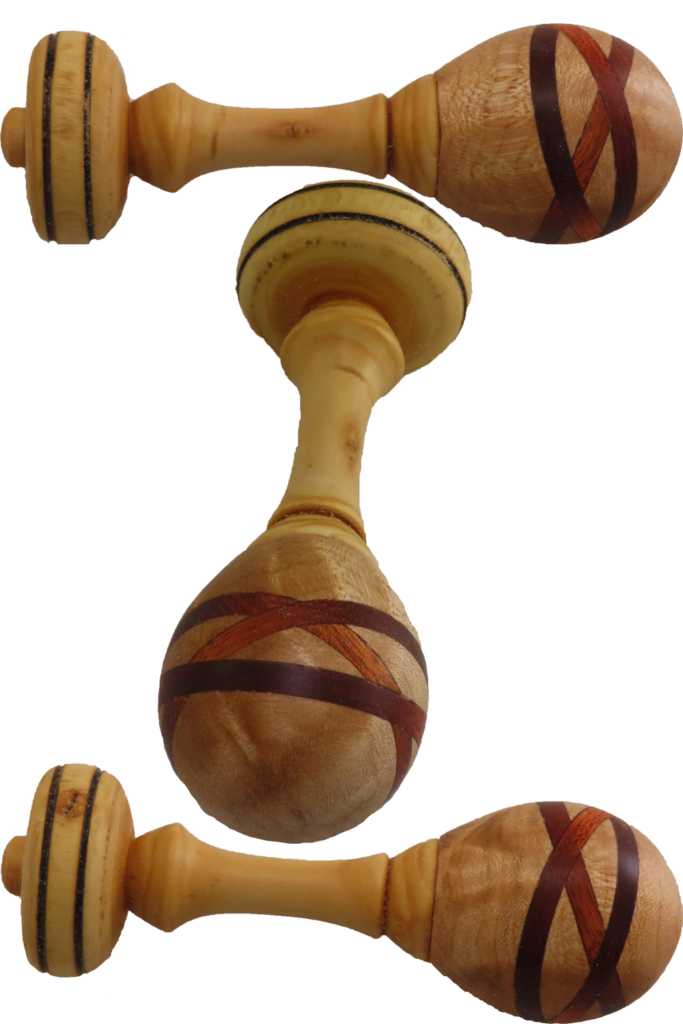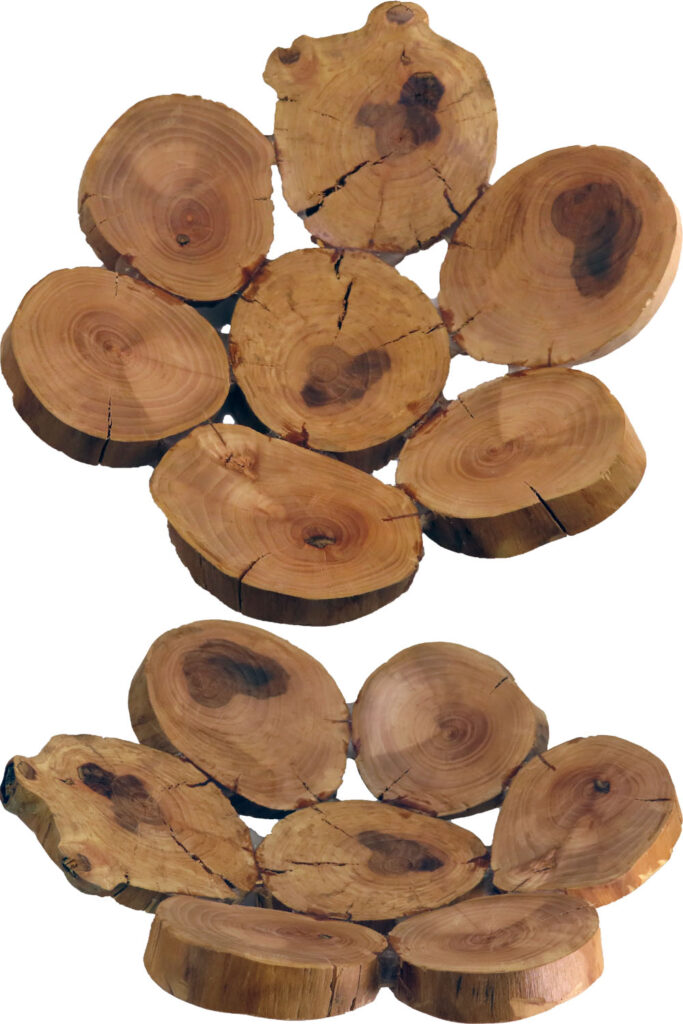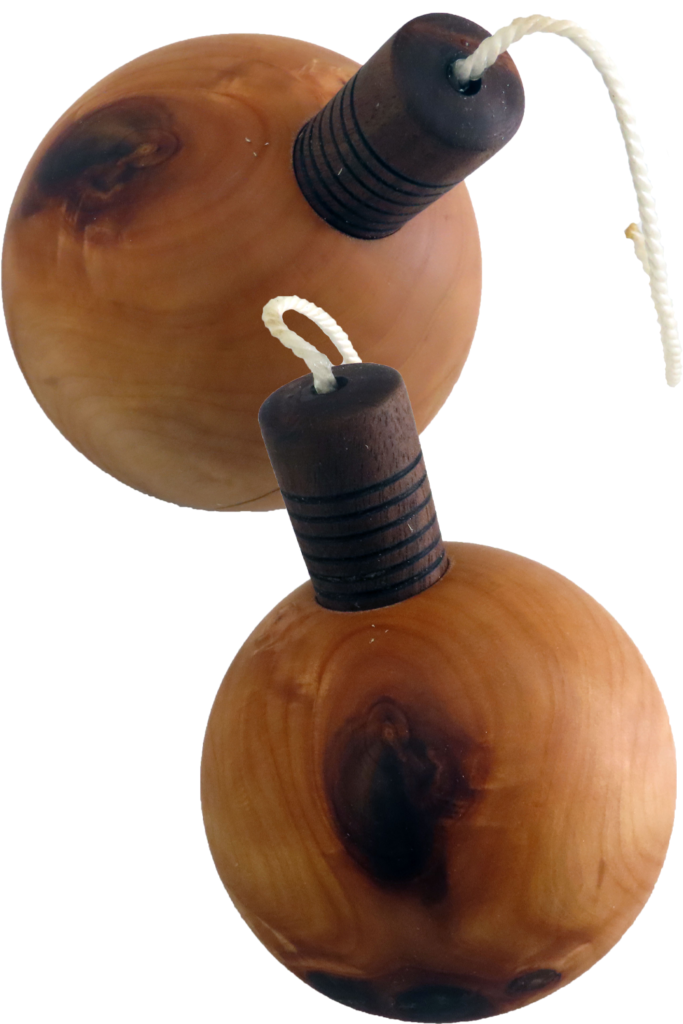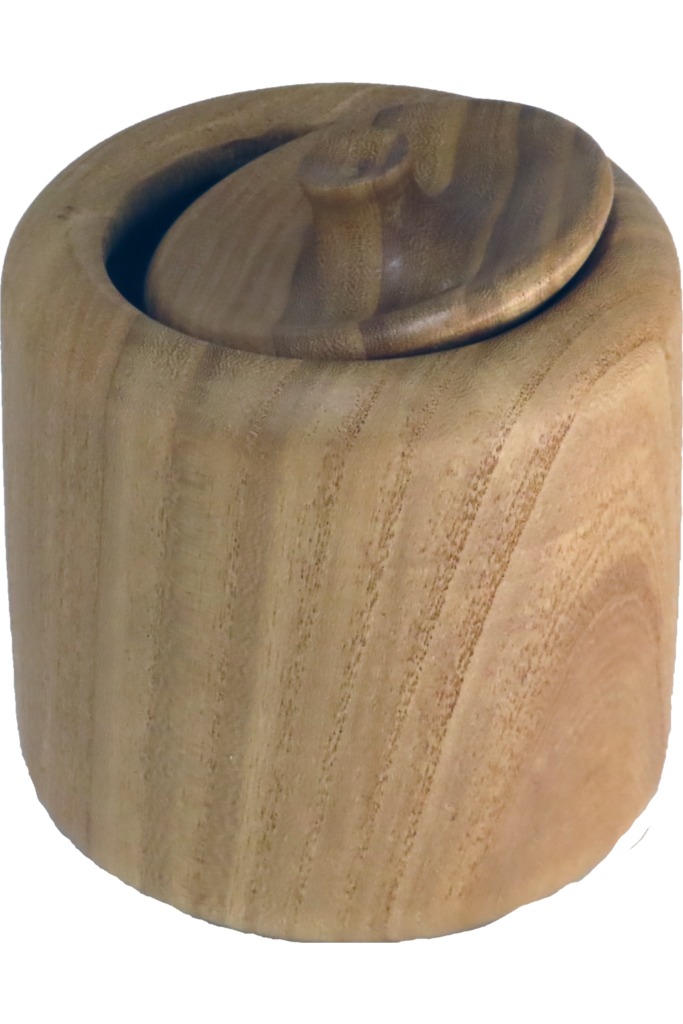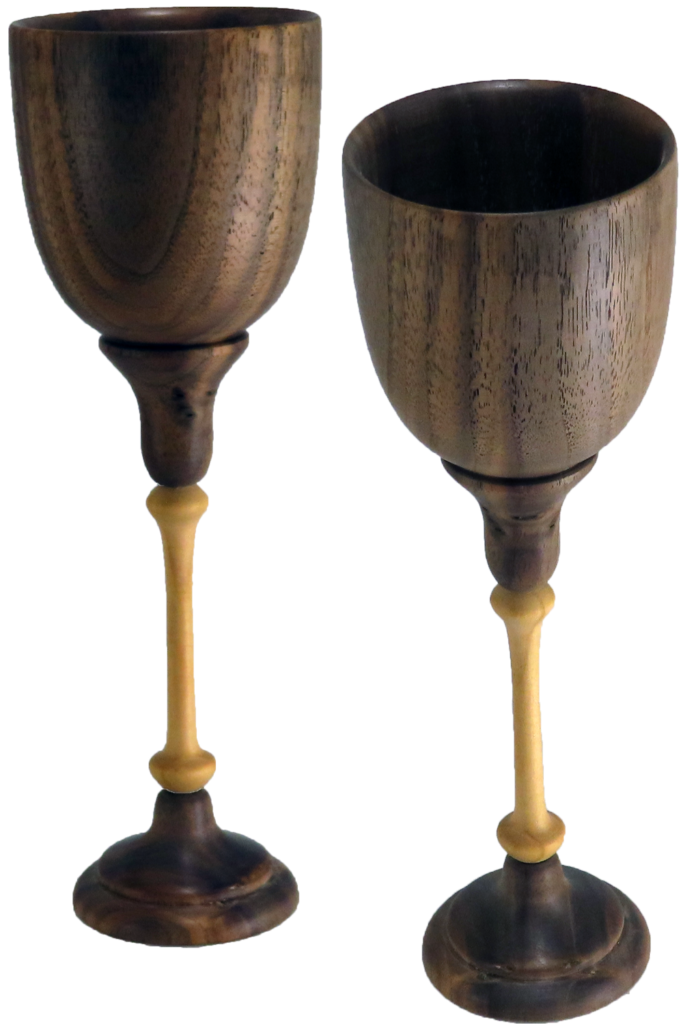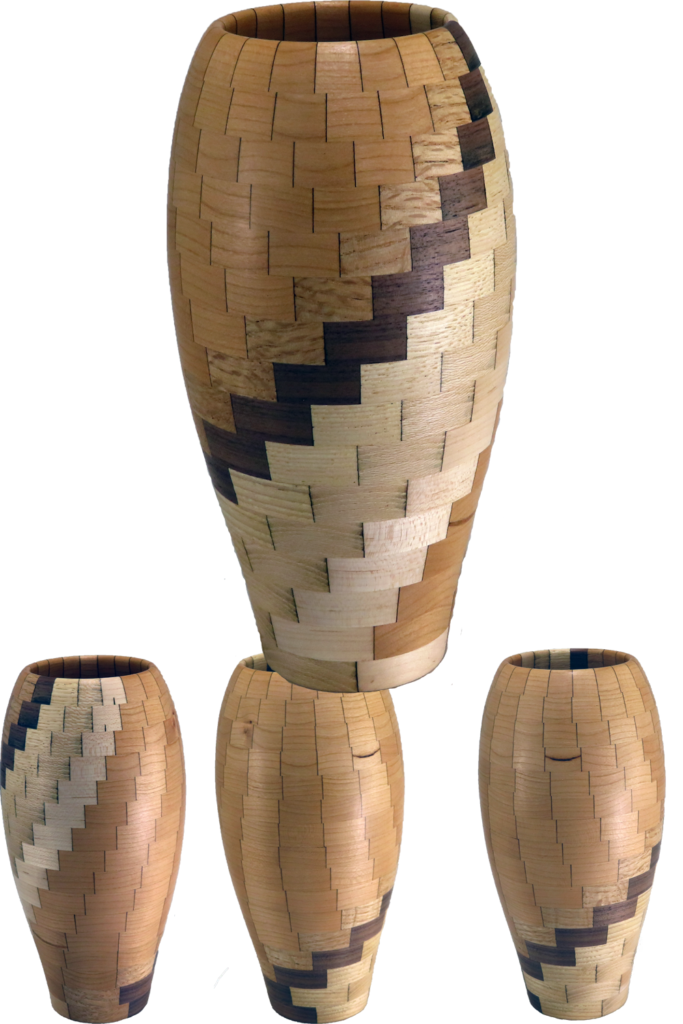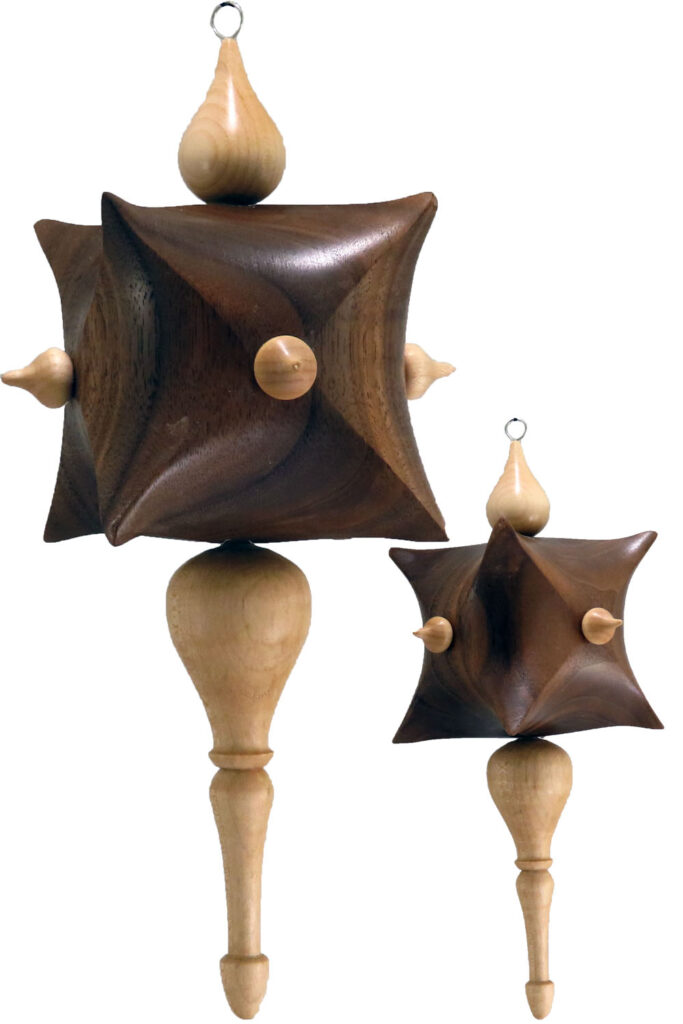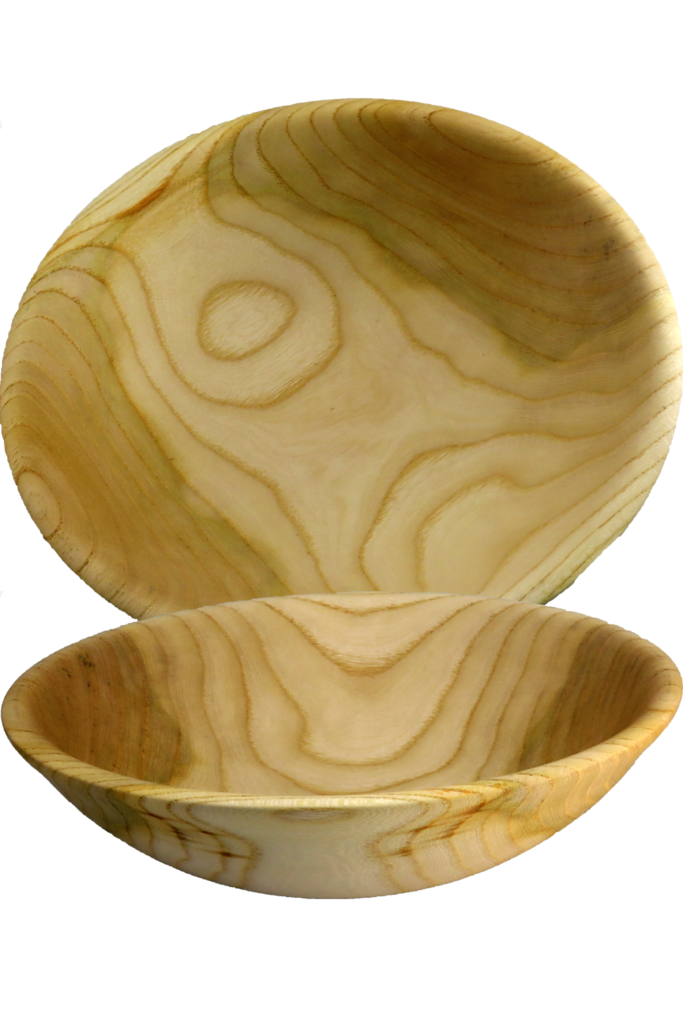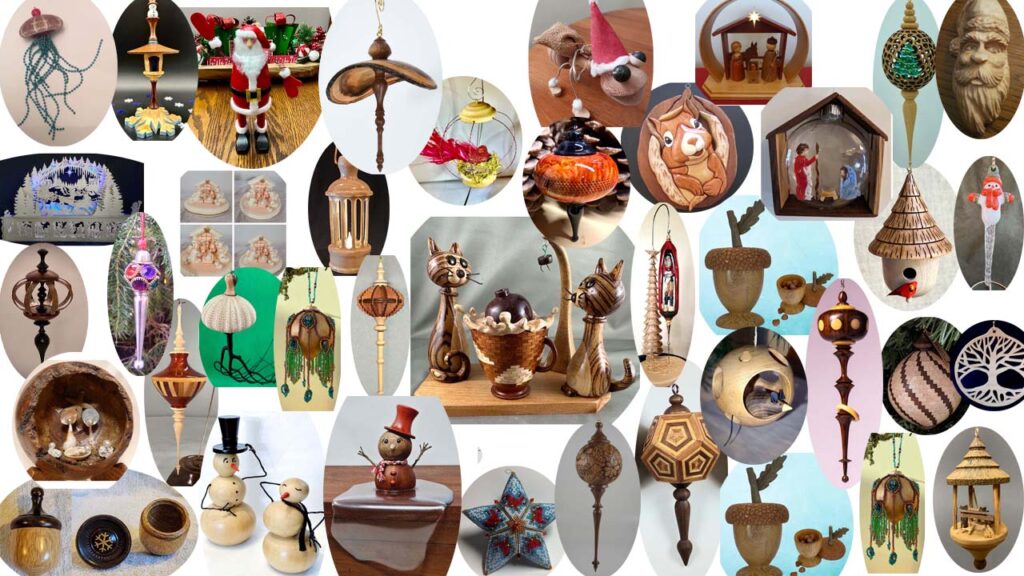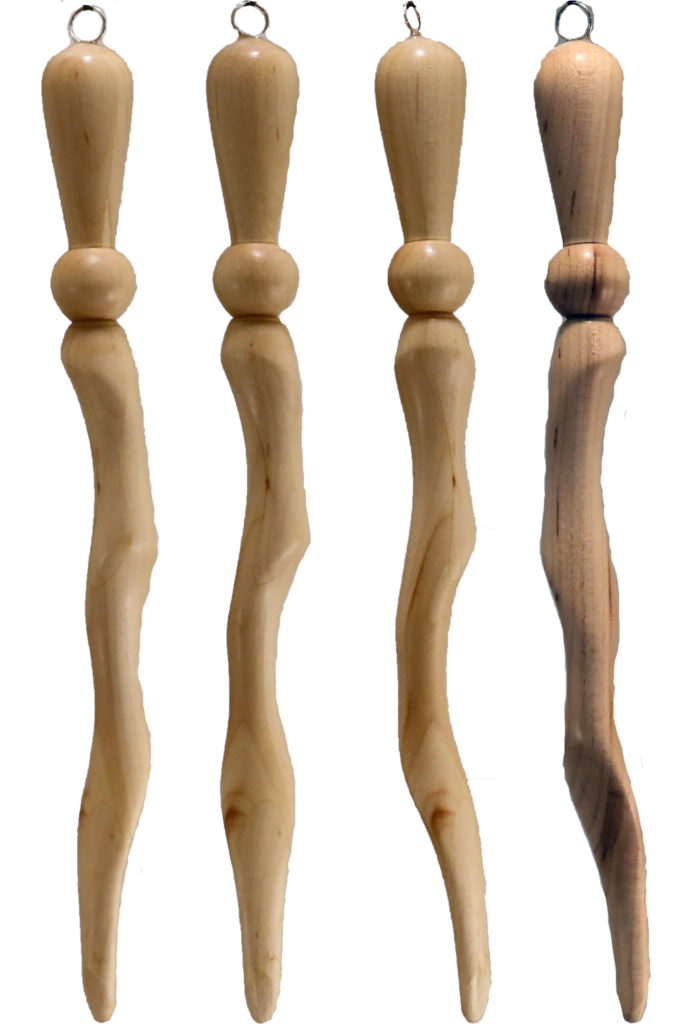Turning Celtic Knot Baby Rattle Compliant With Safety Regulations
This video post is best viewed here on this page. If you are having difficulty, it is also posted on YouTube and FaceBook.
After a club demonstation on baby rattles, I decided to turn my own. Club demonstrations are a great source for inspiration to expand or refine my turning repetoire.
More than a plain baby rattle, this rattle features a three loop Celtic knot following a process I developed several years ago. My three rules for Celtic knots are:
- Perfectly index cuts;
- Perfectly maintain stock orientation
- Perfectly replace removed wood.
My process allows for any number of loops opposite the common 2 or 4 from square stock and it adapted for table saws and band saws.
However, government safety regulations also apply to baby rattles to prevent fatal accidents with babies. Both section 1501 and 1510 must be followed. 1501 is a test for small parts. 1510 is a test specifically for baby rattles.
I 3D printed a test fixture for baby rattles. It is downloadable from www.Printables.com at this link
My rattle is 4.5 inches long and 1.5 inches diameter, finished with beeswax and mineral oil. Popcorn kernels provide the noise source.
Enjoy.
Exploring Negative Space By Turning Rustic Bowl
This video post is best viewed here on this page. In case of technical difficulties, it is also available on YouTube and FaceBook.
I’ve wanted to explore negative space project. This is one that I thought of recently. It is rustic with voids between slices. UV resin “tack welded” slices together until more resin could be applied.
The center slice has a mortise on the bottom side for mounting to the lathe. However, the lathe was used only for measurement and holding. Measurement was the distance between the edge of the slice and a wooden platform mounted in the tool rest.
UV resin cures with ultra-violet light in contrast to two-part epoxy resin. I purchase the resin from Amazon – there are a lot to choose from.
My apple bowl is about 10 inches diameter and 3 inches high, finished with wipe-on poly.
Enjoy.
You’re The Bomb – Turning A Valentine’s Surprise
This video is best viewed here on this page. But, if you are having problems, it is also posted on YouTube and FaceBook.
This is a bit strange Valentine’s project. But, if you add a note, candy, small gift, wedding ring, or other jewelry, it takes on added significance.
Except for the hollowing process, this uses the octagon and cup faceplate method to turn a perfect sphere.
The differences are that I also hollow this sphere which, in turn, requires using a chuck.
My sphere is about 2.75″ diameter. The cork brings it to almost 4″ tall.
It is apple and walnut wood finished with my utility media of beeswax and mineral oil (1 Lb to 1 pint)
Key measures base on the diameter of the starting cylinder.
Size of octagon side 0.414 times diameter.
Distance from end of cylinder to corner of octagon 0.293 times diameter.
Please see my earlier videos for a more detailed explanation of the octagon method.
Woodturning Essentials – Octagon Method For Perfect Spheres
Woodturning Perfect Spheres – For Wise Turners
Enjoy.
Turning Lidded Box From Green, Wet Wood
This post is best viewed right here — But if there happens to be technical difficulties, it is also posted on YouTube and FaceBook.
I love to turn fresh, green, wet wood. While it is sometimes
a shower, the wood is soft and cheap. The problem is that it
is wet and will always shrink and warp.
The solution – turn it twice with time to dry between. While
there are still precautions to avoid cracks, this works.
Except that with all that time working on other projects,
I forget about the wood that is drying and what I intended
for it.
Fortunately, I can get back to the project and finally turn it.
Having visited other turners’ shops, I am not alone. 🙂
Some newer viewers may wonder why I insist on wearing a face shield for safety. Please check out this video:
Apricot Disaster
Enjoy.
Turning Simple Three Part Goblet – Low Risk – High Reward
This video is best right here but in case of technical difficulties, it is also posted on YouTube and FaceBook.
Of the many types of goblets that I have turned, I think
a three piece goblet is the simplest and very rewarding.
Simple: Only smaller pieces are extending out from the spindle.
Therefore, no steady rest is usually required.
Efficient: Smaller size pieces of wood can be used.
The stem does not require wasting most of a block of wood.
Pretty: The bottom of the base is easily turned and finished.
My goblet is about 8 inches tall and about 2.5 inches diameter,
finished with wipe-on poly.
Some newer viewers may wonder why I insist on wearing a face shield for safety. Please check out this video:
Turning Laser Cut Segmented Spiral Vase
In case of technical difficulties, this video post is also on YouTube and FaceBook. Where Best? Right here at As Wood Turns.
This project was inspired by Mark Hunter’s article in American Woodturner June 2023.
While the result was the interesting part. I did not like the process to cut the segments. It seemed extremely time-consuming and a significant risk element.
But, having recently acquired a 40 watt LED laser, I decided to try it out on a smaller scale. Only 16 rings with segments incrementing from 5 to 20 segments. BTW that is exactly 200 segments from six different woods: maple, hickory, sycamore, oak, walnut with a background of cherry. All rings were 1/2″ thick. The finish is wipe-on poly. I wanted to use bloodwood and heat treated ash for more contrast but I could not cut them. Both triggered the fire sensor on the laser. Bloodwood due to the number of passes required to get the cut and the cumulative power; Heat treated ash simply flamed up very quickly. I think due to the previous processing it was almost charcoal already.
All segments were prepared using Lightburn software then cut on an LED 40 watt laser with smoke enclosure and exhaust. Since I am still checking out the laser, I hesitate to give the manufacturer.
Some newer viewers may wonder why I insist on wearing a face shield for safety. Please check out this video:
Green Apricot Bowl Disaster
Enjoy.
p.s. If you would like a more in depth demonstration than my weekly videos, please contact me for an IRD (Zoom Demo) on this or other topics.
Turning 8 Point 3 Axis Star Ornament – No Jig Required
This video is best viewed here on this page. If there are technical glitches, it is also posted on YouTube and FaceBook.
Two months ago, I finally turned a star inspired by Theo Haralampo. That star was held up while I designed a jig to facilitate its turning.
I saw this star in the Christmas Ornament Challenge by Patrick Hoggard and wanted to try this style myself.
The starting blank was 2.75″ cube of walnut(butternut).
Holes were drilled to accomodate a pen mandrel.
Then turned.
The finials are maple.
No jig other than a common mandrel.
Enjoy.
Here’s a link to the other star ornament
A Tale Of Turning Two Bowls Same Trunk – Opposite Look – Part 2
In case of technical difficulty, this video is also posted on YouTube and FaceBook.
Last spring I was given a trunk section of Chinese elm. At that time, I decided to turn two bowls from the wood. However, the bowls would have dramatically different styles and turning techniques.
Part one is a natural edge or bark edge bowl turned all at once. It was finished and allowed to dry and potentially warp.
This is part two – a traditional bowl that is perfectly round with not distortion from drying and warping. One difference was reversing the vertical axis so that the top of the bowl comes from near the pith. Another difference is that this bowl was turned twice with over seven months between the two turning sessions. In the first turning session, the bowl was turned with a wall thickness between 3/4″ and 1″. After being coated with a moisture resistant sealer, it was allowed to dry. When dry, the bowl was again mounted to turn the wall thickness down to final width. This turning removed all distortion from drying and warping.
Both bowls are finished with walnut oil. This one is 9 inches diameter by 3 inches tall.
In this case the moisture resistant sealer was TiteBond 2 glue that I am experimenting with.
Part 1 Link
A Tale Of Turning Two Bowls – Same Trunk – Opposite Look – Part 1
Enjoy.
2023 Christmas Ornament Challenge Winners
In case of difficulty, this is also posted on YouTube and FaceBook. Best right here.
At last – The votes have been tallied and grand prizes allocated.
Wow! This is a fantastic challenge with 417 ornaments from twelve countries.
I cannot believe the wide range of talent and creativity. I can safely say that this is the best display or ornaments in the world. All because of your ornament contributions. Thanks to each participant and our sponsoring vendors.
2023 Finalists are:
Michael Lober
Tim Capraro
Myron Robinson
Sarah Slocum
Richard Nealis
Bill Bulkeley
Aubrey Schlappi
Bruce Jordan
Jack Boggio
Jose Esteban Cruz
Eric Rohel
James Norfleet
Paul Stagl
Club Winners are: (Free IRD)
Cape Cod Woodturners
Arizona Woodturners Association
Asociacion Torneros de Madera de Puerto Rico
Detroit Area Woodturners
Club Runner ups: (Thank you)
Woodworkers of Central New York
Front Range Woodturners
Vendor Sponsors – Grand Prizes:
Jacques Vesery
Craft Supplies
Hunter Tools
Air Brushing Wood
Turntex
Robust Tools
Vendor Sponsors – Bonus Prizes:
Alumilite
Air Brushing Wood
Woodturners Wonders
As Wood Turns
REMEMBER NOVEMBER is when the next ornament challenge will be open for your ornaments.
Enjoy!
Turning Multi-Axis Icicle Ornament – My Answer To Skew Challenge
In case of difficulty, this video is also posted on YouTube and FaceBook. Best right here!
This project is my answer to Richard Findley’s skew icicle challenge. His request as for an icicle ornament turned only with a skew.
But, why not enhance it a little? Who has seen a perfectly round icicle. Multi-axis turning is the answer to give it a little more character. Still with skew only.
They key to a successful long eccentric project is a set of faceplates with the offsets as shallow holes. These faceplates enable positioning and power with a minimum of pressure from the live center. This minimizes the odds of the wood breaking under pressure. This is especially important for long, thin spindles.
On the spindle side, add 2 short (~.5″) brass pins: one goes to the eccentric axis position; one is a drive pin. On the live center, a single pin goes to the central axis or any of the offset holes. Of course, also drill a hole for the pin on the live center end of the project wood and two holes (center and 1 offset) on the spindle end.
For a project offsetting only the live center, move the pin to the appropriate hole in the faceplate. To offset the spindle end, move the project wood with the center pin to an offset hole and the other pin to provide rotation.
The icicle is 8″ long, finished with shellac.
Enjoy.
